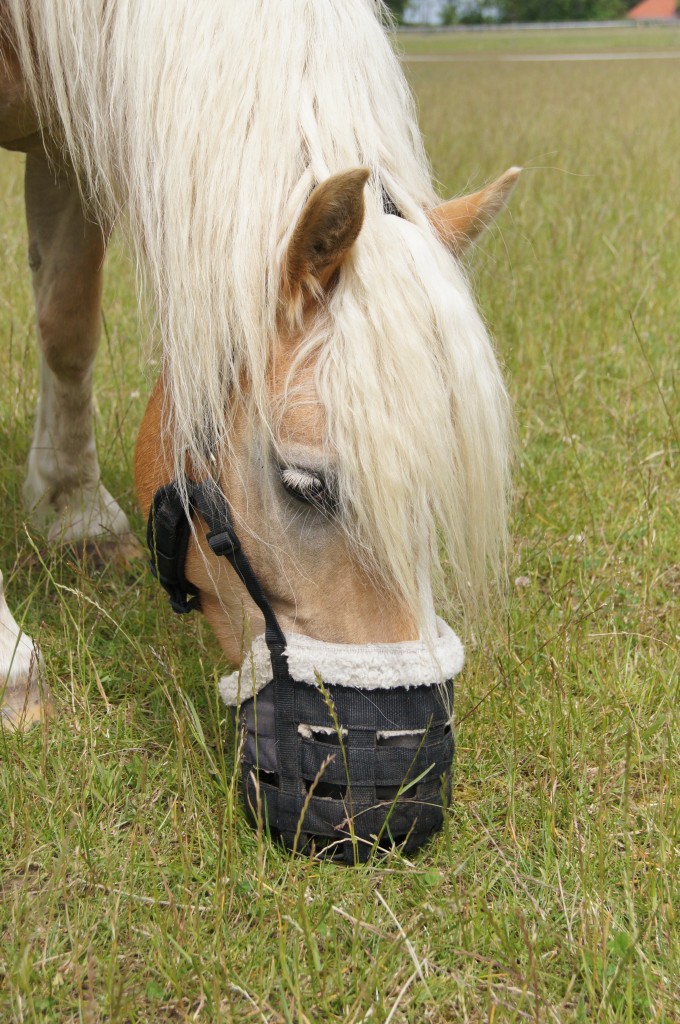Andie Vilela, Redwings Education and Campaigns Manager, discusses the use of a grazing muzzle.
Finally, spring appears to have sprung! While we are busy celebrating the sunshine and longer evenings, this time of year can prove problematic for horse owners. With new grass growing fast it’s important that grazing is managed to prevent horses from gaining too much weight.
If you have concerns about your horse’s weight, Redwings’ publication ‘Lightening the load’ is a good place to start for advice.
At Redwings, we are fortunate to have many ways to restrict grazing to ensure horses enjoy life outside, in a group and to be able to perform the grazing and foraging behaviours that they need to stay happy and healthy. We rotate herds so lighter weight herds graze paddocks before a group of good-doers.

Although we do not use grazing muzzles routinely at Redwings as we are able to use woodchip paddocks, owners may want to try a grazing muzzle to allow their horse to live out and with their companions. A grazing muzzle is used to reduce the amount of grass a horse can eat when turned out in a paddock. This can reduce the amount of food that the horse is eating, without the need for them to be separated from their field mates.
Grazing muzzles may look odd, or even unkind, but they can be a practical tool in weight management when introduced and used diligently. Indeed, they are widely available on the market for weight management, and to prevent weight gain and the risk of serious health issues related to obesity.
Horses should be able to eat and drink through the muzzle, which is why it is important to monitor them very carefully and especially when leaving them with a muzzle on for the first time.
It is important to remember that ponies can consume a huge amount of grass in a just a few hours so time without the muzzle on, for example to allow for mutual grooming and interaction with field mates should be considered carefully.
If used incorrectly a grazing muzzle can pose welfare risks, so knowing how to use one is really important. Similarly it is not recommended to have a grazing muzzle on 24/7. It is important to monitor for rubs and sores and to keep a close eye on their teeth which could incur adverse wear.
As member of NEWC (the National Equine Welfare Council), Redwings collaborated to produce written and video guidance for horse owners interested in using grazing muzzles. Guidance notes to the below video can be accessed here.
There is also a video indicating how to body condition score (feel for fat) on the Redwings website here.